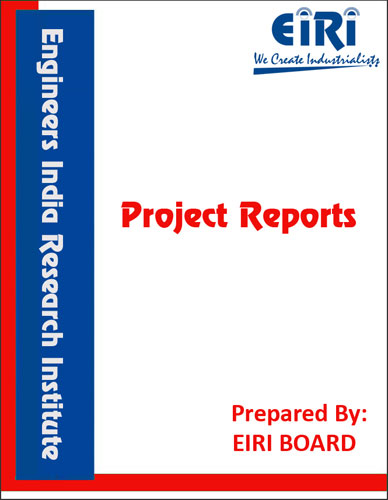The project report includes Present Market Position and Expected Future Demand, Market Size, Statistics, Trends, SWOT Analysis and Forecasts. Report provides a comprehensive analysis from industry covering detailed reporting and evaluates the position of the industry by providing insights to the SWOT analysis of the industry.
ACP CLADDING
Italso aluminium composite material, (ACM) is a type of flat panel that consists of two thinaluminium sheets bonded to a non-aluminium core. ACP is made of recy cled p oly ethylene core s andwi ched b etween two thin al uminium ski ns whi ch a lso have recy cled content.ACPs are frequently used for external cladding or facades of buildings, insulation, andsignage. If the core material is flammable, usage may be problematic as a building material and some jurisdictions have banned their use.
Aluminium sheets can be coated with polyvinylidene fluoride (PVDF), fluoropolymer resins (FEVE), or polyester paint. Aluminium can be painted in any kind of colour, and ACPs are produced in a wide range of metallic and non-metallic colours as well as patterns that imitate other materials, such as wood or marble. The core is commonly low density polyethylene, or a mix of low density polyethylene and mineral material to exhibit fire retardant properties.
USES AND APPLICATION OF ACP CLADDING
It is suitable for use in exterior and interior use in commercial and industrial applications forsignage and cladding. ACPs are frequently used for external cladding or facades of buildings, insulation, andsignage. If the core material is flammable, usage may be problematic as a building material and some jurisdictions have banned their use.
ALUMINIUM CURTAIN WALL
Curtain walling is a vertical building enclosure which supports no load other than its own weight and the environmental forces which act upon it. Curtain walls are not intended to assist in maintaining the structural integrity of a building. Dead loads and live loads are thus not intended to be transferred via the curtain wall to the foundations. Aluminium framing is used for the vast majority of curtain walling applications, primarily for its excellent strength to weight ratio and its ability to be extruded in complex shapes. At 2.7g/cm2, aluminium is 66% lighter than steel. It is also far less susceptible to brittle fractures. The majority of aluminium curtain walling is constructed using 6000 series heat-treatable magnesium silicone alloys. They are highly extrudable and are thus ideal for the creation of complex shapes The properties of the alloy are amplified by the shape of the extruding die. Careful and knowledgeable die design can take advantage of the ability of the extrusion process to distribute the material across the section to exactly where it is needed for a particular performance requirement.
A curtain wall system is an outer covering of a building in which the outer walls are non-structural, but merely keep the weather out and the occupants in. As the curtain wall is non-structural it can be made of a lightweight material, reducing construction costs. When glass is used as the curtain wall, a great advantage is that natural light can penetrate deeper within the building. The curtain wall façade does not carry any dead load weight from the building other than its own dead load weight. The wall transfers horizontal wind loads that are incident upon it to the main building structure through connections at floors or columns of the building. A curtain wall is designed to resist air and water infiltration, sway induced by wind and seismic forces acting on the building, and its own dead load weight forces.
Curtain wall systems are typically designed with extruded aluminum members, although the first curtain walls were made of steel. The aluminium frame is typically infilled with glass, which provides an architecturally pleasing building, as well as benefits such as daylighting. However, parameters related to solar gain control such as thermal comfort and visual comfort are more difficult to control when using highly glazed curtain walls. Other common infills include: stone veneer, metal panels, louvres, and operable windows or vents
Curtain walls differ from store-front systems in that they are designed to span multiple floors, and take into consideration design requirements such as: thermal expansion and contraction; building sway and movement; water diversion; and thermal efficiency for cost-effective heating, cooling, and lighting in the building.
INTRODUCTION
THE BENEFITS OF ALUMINIUM WINDOWS
ADVANTAGES OF PVC PROFILES OVER WOOD/ALUMINIUM
B.I.S. SPECIFICATIONS
MARKET POSITION
OVERVIEW OF THE CLADDING MARKET IN INDIA
PROCESS FLOW CHART
MANUFACTURING PROCESS OF ALUMINIUM DOOR AND WINDOW,
ALUMINIUM CURTAIN WALL AND ALUMINIUM PARTITION
MANUFACTURES/ SUPPLIERS OF ACP CLADDING
MANUFACTURES/ SUPPLIERS OF ALUMINIUM DOORS & WINDOW
MANUFACTURES/ SUPPLIERS OF ALUMINIUM CURTAIN WALL
MANUFACTURES/ SUPPLIERS OF ALUMINIUM PARTITION
MANUFACTURING PROCESS OF ACP CLADDING
PLANT LAYOUT
SUPPLIERS OF PLANT AND MACHINERY
SUPPLIERS OF RAW MATERIALS
APPENDIX – A :
1. COST OF PLANT ECONOMICS
2. LAND & BUILDING
3. PLANT AND MACHINERY
4. FIXED CAPITAL INVESTMENT
5. RAW MATERIAL
6. SALARY AND WAGES
7. UTILITIES AND OVERHEADS
8. TOTAL WORKING CAPITAL
9. COST OF PRODUCTION
10. PROFITABILITY ANALYSIS
11. BREAK EVEN POINT
12. RESOURCES OF FINANCE
13. INTEREST CHART
14. DEPRECIATION CHART
15. CASH FLOW STATEMENT
16. PROJECTED BALANCE SHEET



